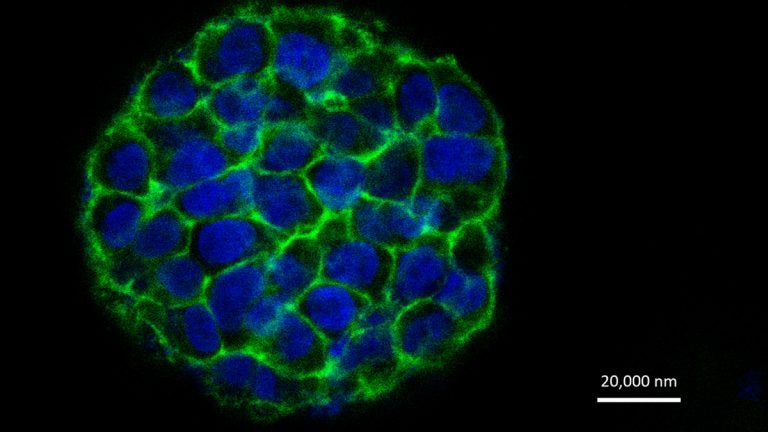Drexel engineers 3D-print tumors

3D cellular morphology on day 8 (Image courtesy of Drexel University)
If you’ve seen a 3-D printer, chances are it’s been used to make things from plastic. But engineers at Drexel have been experimenting with something a little bit different.
If you’ve seen a 3-D printer, chances are it’s been used to make things from plastic, maybe a spoon or fork. But engineers at Drexel University have been experimenting with printing something a little bit different: living tumors.
Jessica Snyder, a graduate student in Drexel’s Biofabrication Laboratory, says printing tumor cells is a whole new way for researchers to investigate cancer. Her advisor, Wei Sun, and colleagues in China are the first to “print” a tumor.
“The same way your inkjet printer works — or similar to that — instead of printing ink, they printed cells,” Snyder said. “And they can produce 3-D structures by printing one layer on top of another layer on top of another layer.”
After a few days living in a grid of jello-like goo, the cervical cancer cells began clumping together to form small sphere-shaped tumors.
“What is really exciting about this technology is that if you had a cancer, what we could do, potentially, is take samples of the cancer that you have,” Snyder said, “and then use a suite of tests, anything from radiation to drug cocktails, to figure out exactly what would best treat that cancer.”
Such a personalized medicine approach is still far off, but there are already signs the 3D-printed tumors are more like those in your body than the flat petri dish cell cultures scientists usually experiment with. Sun found they grow more quickly and are harder to kill with Taxol, a popular cancer drug.
WHYY is your source for fact-based, in-depth journalism and information. As a nonprofit organization, we rely on financial support from readers like you. Please give today.

